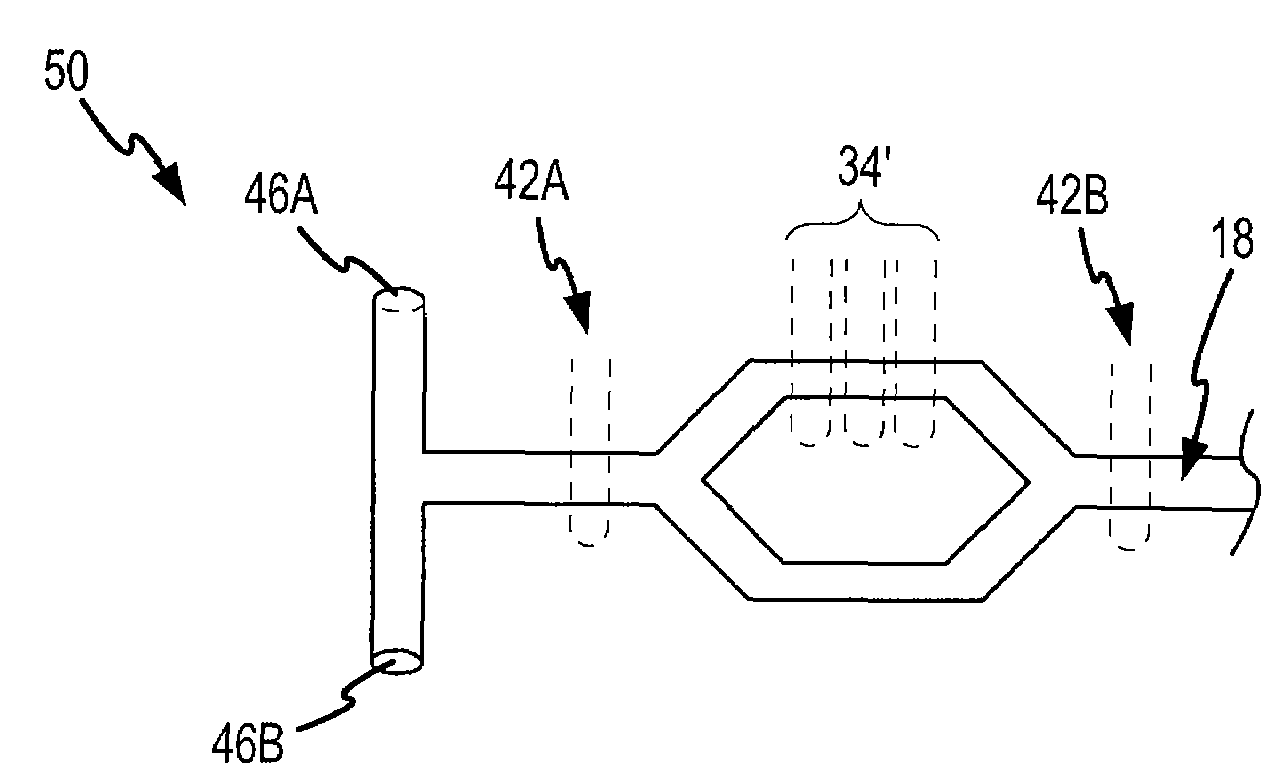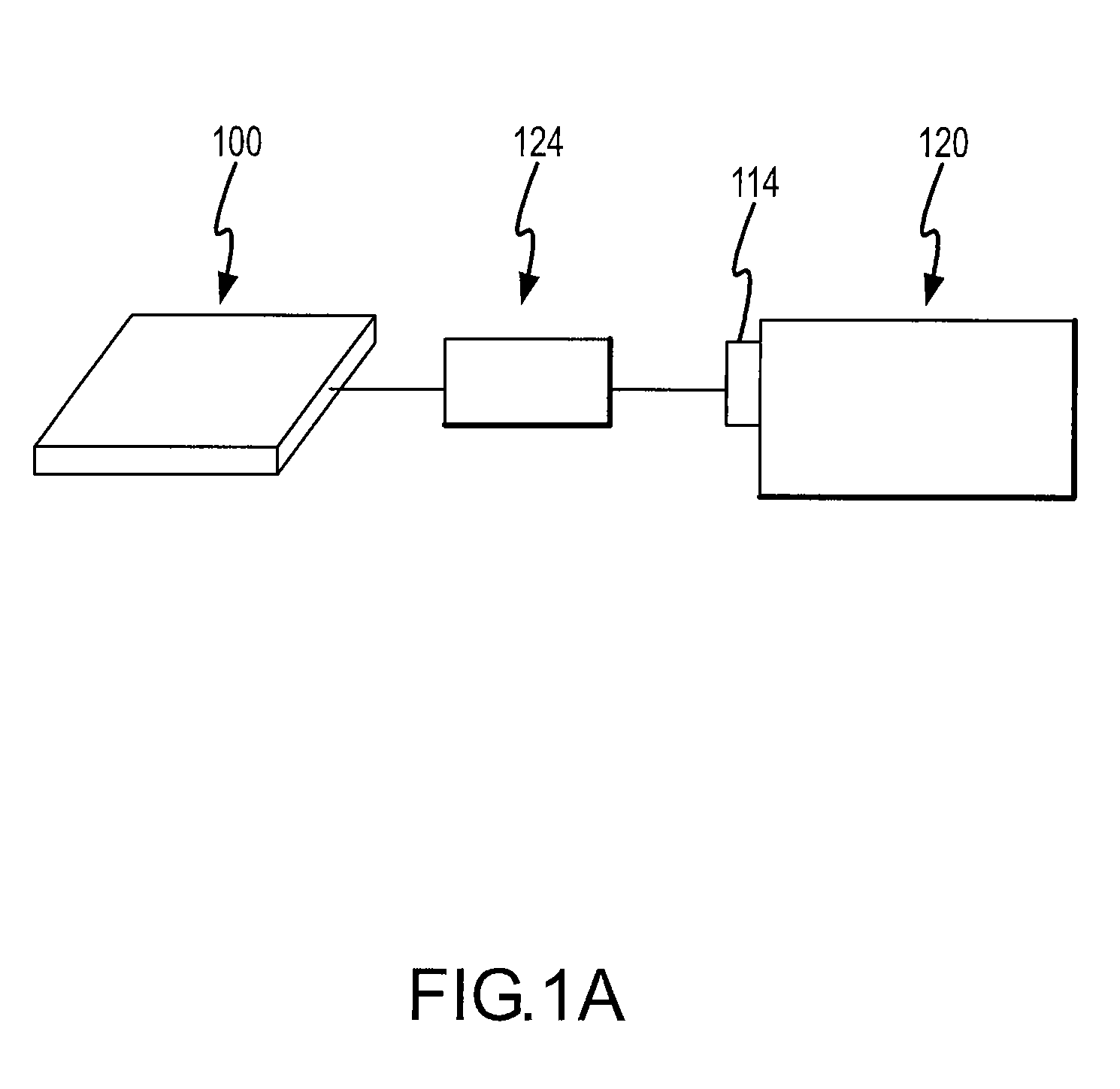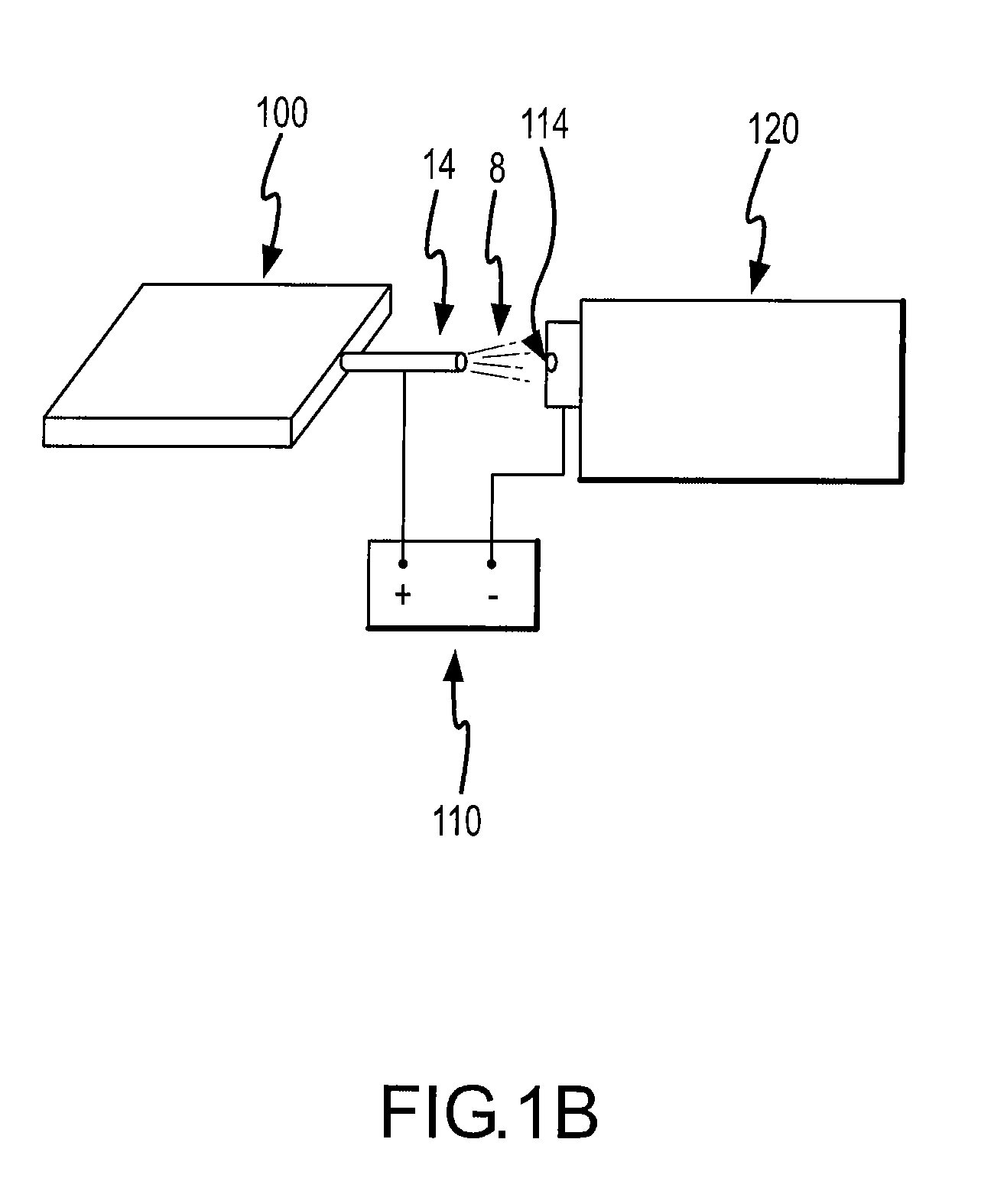Microfluidic-based electrospray source for analytical devices with a rotary fluid flow channel for sample preparation
a microfluidic and electrospray source technology, applied in the direction of fluid speed measurement, chemical vapor deposition coating, particle separator tubes, etc., can solve the problems of lif not being an ideal detection method, requiring the fluorescent analyte of interest, and the laser-induced fluorescence detection method is mostly limited, so as to reduce the production of waste, reduce the cost of manufacturing and operation, and reduce the consumption of resources
- Summary
- Abstract
- Description
- Claims
- Application Information
AI Technical Summary
Benefits of technology
Problems solved by technology
Method used
Image
Examples
Embodiment Construction
[0061]The present invention will be described with regard to the accompanying drawings which assist in illustrating various features of the invention. In this regard, the present invention generally relates to a microfluidic device comprising a means for providing a fluid sample from to an analytical device, an analytical apparatus comprising the same, and methods for using the same. The same numbers in different drawings represent identical elements. The drawings are provided for the purpose of illustrating the practice of the present invention and do not constitute limitations on the scope thereof.
[0062]The analytical device 120 can be any device which is used for analyzing a chemical compound. Typically the analytical device 120 has a sample injection port 114 for introducing a sample to be analyzed. While the sample can be in a pure form (i.e., neat), microfluidic devices of the present invention are particularly useful for analyzing compounds which are in a solution.
[0063]Prefe...
PUM
| Property | Measurement | Unit |
|---|---|---|
| Young's modulus | aaaaa | aaaaa |
| Young's modulus | aaaaa | aaaaa |
| Young's modulus | aaaaa | aaaaa |
Abstract
Description
Claims
Application Information
 Login to View More
Login to View More - R&D
- Intellectual Property
- Life Sciences
- Materials
- Tech Scout
- Unparalleled Data Quality
- Higher Quality Content
- 60% Fewer Hallucinations
Browse by: Latest US Patents, China's latest patents, Technical Efficacy Thesaurus, Application Domain, Technology Topic, Popular Technical Reports.
© 2025 PatSnap. All rights reserved.Legal|Privacy policy|Modern Slavery Act Transparency Statement|Sitemap|About US| Contact US: help@patsnap.com



